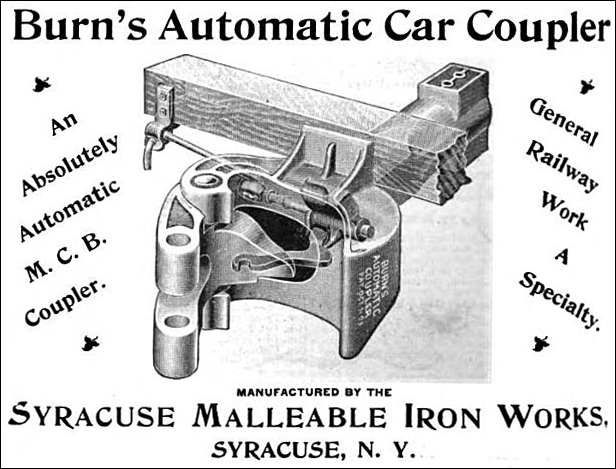magickmaker
New member
While doing research on my pending King's Park route, I noticed a number of early boxcars and locomotives with a curious coupler on them. While a "knuckle" coupler I noticed that they featured this odd slit in the coupler face. I'd always wondered why this was, but didn't think too much about it. However upon doing more research, I happened across a post on Shorpy (photo site) that actually explained it to me. So, here's the skinny on the slit face coupler (in case you were curious.)

Though adopted as "standard" by 1877, conversion of couplers from link and pin to janey (knuckle) type was actually rather slow. Some railroads converted right away, others took longer to do so. Even as late as 1900, it was not uncommon to still find freight cars using the outdated link and Pin system. To cope with this eventuality, couplers were designed to act as a kind of "transition" between the two. The slot in the coupler face was designed to accept the link of the old Link and Pin system, while the pin would be dropped through the hole in the end of the knuckle. (In operation, the Coupler face would be closed and coupling done manually like the old Link and Pin system.) By 1912, 99% of Link and pin couplers had been obsoleted and railroads adopted the new automatic system. However, for some time the split face coupler could still be found. (Largely in situations of older locomotives, or MOW stock which might still use the original obsolete system.)
By the 20's, the split face coupler had fallen by the wayside, with federal regulations finally putting the end to the obsolete and dangerous system. However, you might find this interesting.
To this day, a remnant of the old original coupler remains, in the form of a hole that travels vertically through the end of the coupler knuckle. That hole is the same hole which in the earlier days the pin was thrust through. Why it remains isn't quite known, but crews have made use of it for everything from holding FREDs, to sticking red flags in.
Now, from a Trainz point of view, if you're modeling anything up to about 1905 you shouldn't feel weird about including one or two link and pin cars in with your trains. It's entirely plausible that the real world railroads had similar consits at one time or another.

Though adopted as "standard" by 1877, conversion of couplers from link and pin to janey (knuckle) type was actually rather slow. Some railroads converted right away, others took longer to do so. Even as late as 1900, it was not uncommon to still find freight cars using the outdated link and Pin system. To cope with this eventuality, couplers were designed to act as a kind of "transition" between the two. The slot in the coupler face was designed to accept the link of the old Link and Pin system, while the pin would be dropped through the hole in the end of the knuckle. (In operation, the Coupler face would be closed and coupling done manually like the old Link and Pin system.) By 1912, 99% of Link and pin couplers had been obsoleted and railroads adopted the new automatic system. However, for some time the split face coupler could still be found. (Largely in situations of older locomotives, or MOW stock which might still use the original obsolete system.)
By the 20's, the split face coupler had fallen by the wayside, with federal regulations finally putting the end to the obsolete and dangerous system. However, you might find this interesting.
To this day, a remnant of the old original coupler remains, in the form of a hole that travels vertically through the end of the coupler knuckle. That hole is the same hole which in the earlier days the pin was thrust through. Why it remains isn't quite known, but crews have made use of it for everything from holding FREDs, to sticking red flags in.
Now, from a Trainz point of view, if you're modeling anything up to about 1905 you shouldn't feel weird about including one or two link and pin cars in with your trains. It's entirely plausible that the real world railroads had similar consits at one time or another.
